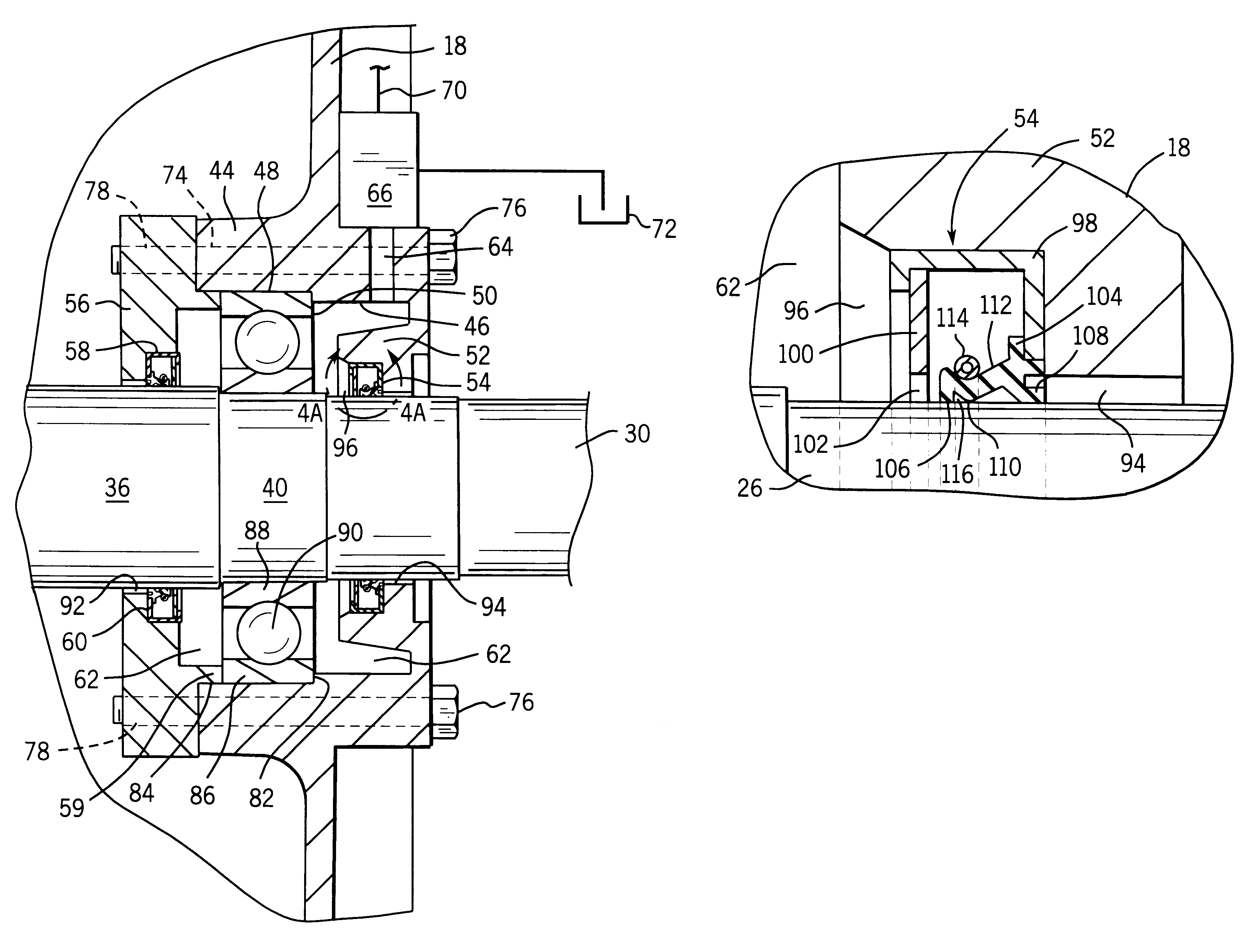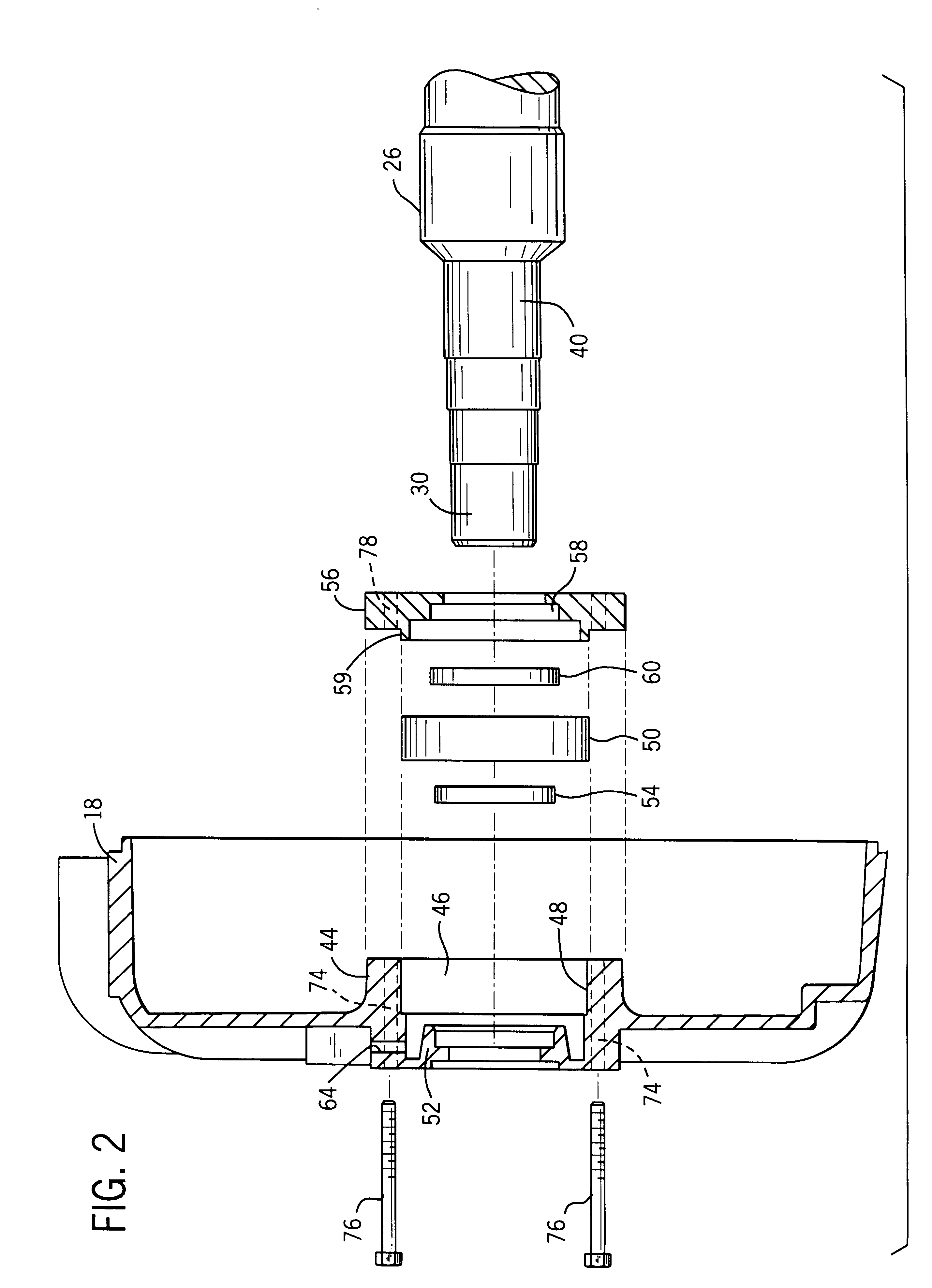Seal arrangement for an electric motor
a technology of sealing arrangement and electric motor, which is applied in the direction of rigid support of bearing unit, mechanical energy handling, mechanical apparatus, etc., can solve the problems of relative speed between the sealing element and the rotating element, oil mist-lubricated motor bearing, and bearing installation of sealing anti-friction bearing on the electric motor sha
- Summary
- Abstract
- Description
- Claims
- Application Information
AI Technical Summary
Problems solved by technology
Method used
Image
Examples
Embodiment Construction
Turning now to the drawings, and referring first to FIG. 1, a diagrammatical sectional view of an electric motor is illustrated including sealing arrangements for a pair of bearing sets. The electric motor, designated generally by the reference numeral 10, includes a stator assembly 12 in which a rotor assembly 14 is rotatably positioned. Stator assembly 12 is lodged within a central housing section 16 of the electric motor in accordance with known techniques. Housing 16 is bounded by a front end bracket 18 and a rear end bracket 20. As will be appreciated by those skilled in the art, front and rear end brackets 18 and 20 provide support for a front bearing and seal assembly 22, and a rear bearing and seal assembly 24, respectively. Assemblies 22 and 24 will be described in greater detail below. It should be noted that details of the stator and rotor construction have not been represented in FIG. 1 for the sake of clarity.
In the embodiment illustrated in the Figures, motor 10 is a t...
PUM
| Property | Measurement | Unit |
|---|---|---|
| pressure | aaaaa | aaaaa |
| power | aaaaa | aaaaa |
| electric power | aaaaa | aaaaa |
Abstract
Description
Claims
Application Information
 Login to View More
Login to View More - R&D
- Intellectual Property
- Life Sciences
- Materials
- Tech Scout
- Unparalleled Data Quality
- Higher Quality Content
- 60% Fewer Hallucinations
Browse by: Latest US Patents, China's latest patents, Technical Efficacy Thesaurus, Application Domain, Technology Topic, Popular Technical Reports.
© 2025 PatSnap. All rights reserved.Legal|Privacy policy|Modern Slavery Act Transparency Statement|Sitemap|About US| Contact US: help@patsnap.com



